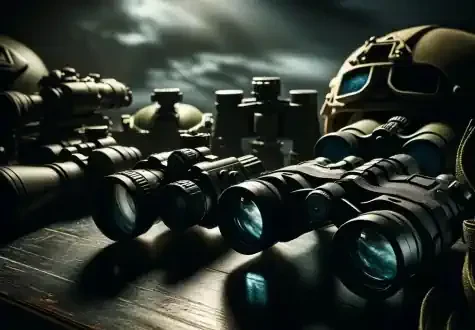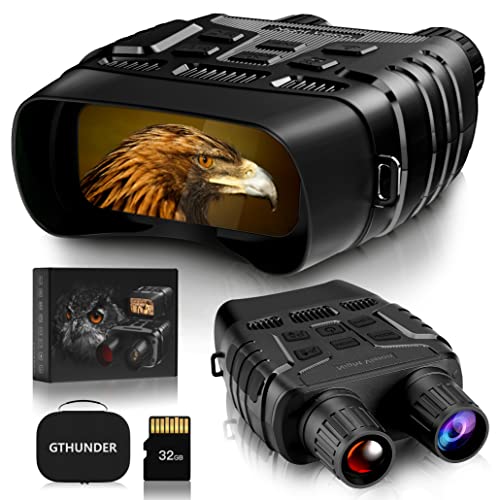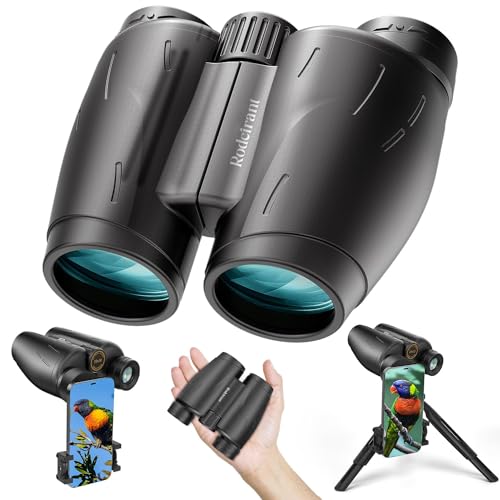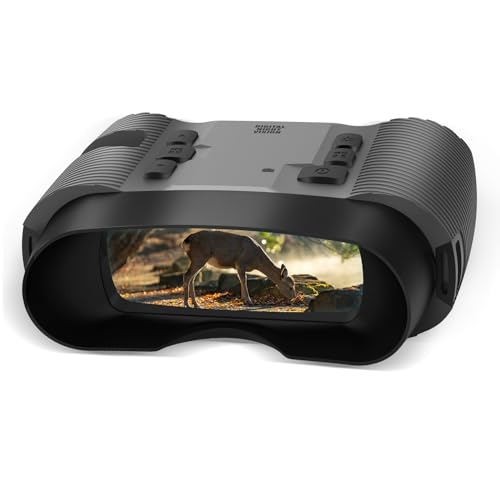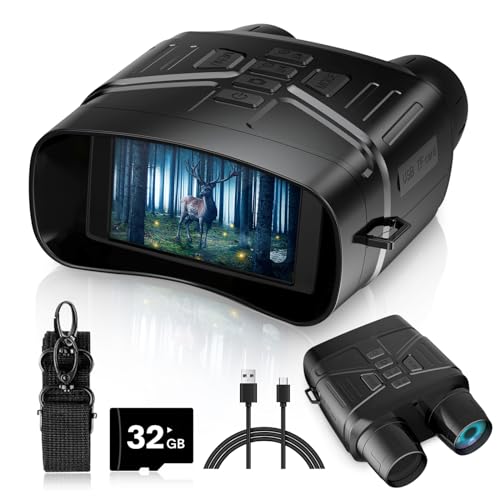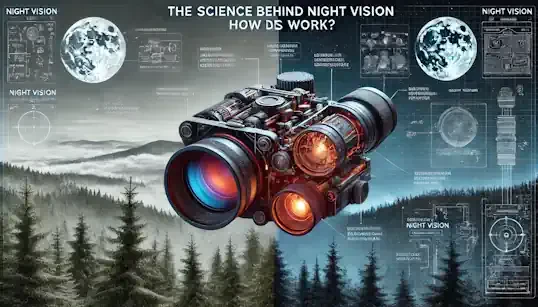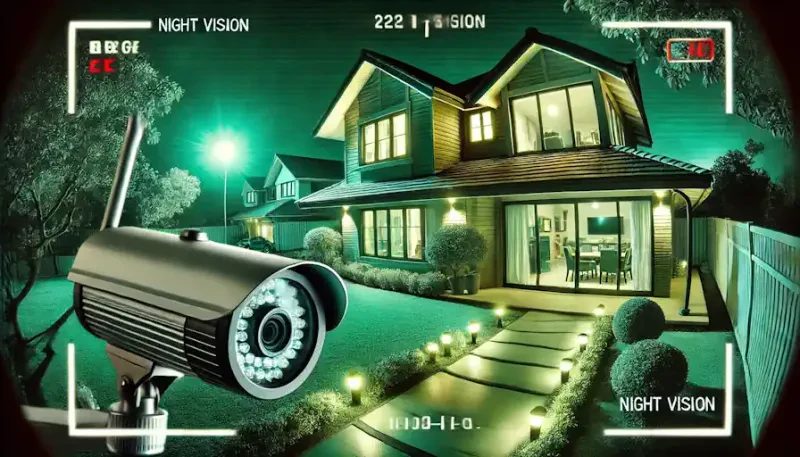Understanding Night Vision Technology
Night vision technology has revolutionized the way we perceive and navigate through darkness. By harnessing the power of cutting-edge optics and advanced electronics, night vision devices can amplify ambient light or detect thermal radiation to provide enhanced visibility in low-light conditions. This subsection will delve into the fundamentals of how night vision technology works and its significance across various industries.
Importance of Night Vision in Various Fields
The importance of night vision technology extends across a wide array of fields, ranging from military and law enforcement to wildlife observation and recreational activities. In military operations, night vision devices offer a tactical advantage by enabling troops to operate covertly under the cover of darkness, enhancing situational awareness and increasing mission success rates. Similarly, in law enforcement, night vision technology aids in surveillance and apprehension efforts, allowing officers to monitor criminal activity and conduct search and rescue operations in low-light environments. Beyond security and defense applications, night vision technology also plays a crucial role in outdoor pursuits such as hunting, camping, and wildlife observation, enabling enthusiasts to explore the nocturnal world with enhanced clarity and safety.
Overview of this Article
In this comprehensive guide to night vision technology, we will explore the intricacies of how night vision works, the different types of night vision devices available, key factors to consider when choosing night vision equipment, and its myriad applications across various industries. Additionally, we will debunk common myths and misconceptions surrounding night vision technology, discuss future trends and advancements in the field, and provide practical tips for maintaining and caring for night vision equipment. By the end of this article, readers will gain a deeper understanding of night vision technology and its profound impact on modern society.
History of Night Vision
Early Developments in Night Vision Technology
The history of night vision technology traces back to the early 20th century, with significant advancements made during World War II. In the 1920s, Hungarian physicist Kálmán Tihanyi invented the first infrared-sensitive electronic television camera, laying the foundation for modern night vision devices. During WWII, both Allied and Axis powers developed rudimentary night vision equipment for military use, including infrared sniper scopes and image intensification devices. However, it wasn't until the Vietnam War that night vision technology became widely adopted by military forces, with the introduction of lightweight, portable night vision goggles and scopes.
Evolution of Night Vision Devices
Following the Vietnam War, night vision technology underwent rapid advancements driven by technological innovation and military demand. In the 1980s, the introduction of second-generation night vision devices marked a significant leap forward in performance and reliability, with improved image resolution and sensitivity. Subsequent generations of night vision technology, including third and fourth generations, further refined image quality, reduced noise, and extended operational range. Today, state-of-the-art night vision devices incorporate digital imaging sensors, thermal imaging technology, and augmented reality overlays for enhanced situational awareness and target acquisition.
Milestones in Night Vision Technology Advancement
Several key milestones have shaped the evolution of night vision technology over the years. In 1939, German engineer Walter Siegmund developed the first practical infrared night vision device, known as the Vampir scope, which was used by German soldiers during WWII. In 1963, the United States military introduced the AN/PVS-2 Starlight scope, the first widely adopted night vision device capable of amplifying ambient light for improved visibility in low-light conditions. Subsequent developments, such as the AN/PVS-7 night vision goggles and AN/PVS-14 monocular, further cemented the role of night vision technology in military operations and civilian applications.
Impact of Night Vision on Military and Civilian Applications
The impact of night vision technology extends beyond the battlefield, with widespread applications in law enforcement, surveillance, search and rescue, and wildlife conservation. In addition to enhancing military capabilities, night vision devices enable law enforcement agencies to conduct covert operations, track suspects, and rescue hostages in low-light environments. In the civilian sector, night vision technology facilitates nighttime navigation, wildlife observation, and outdoor recreation, providing enthusiasts with a new perspective on the natural world. Moreover, advancements in night vision technology have led to the development of innovative medical imaging systems for detecting tumors and monitoring physiological functions in real-time.
How Night Vision Works
Principles of Light Amplification
Night vision technology operates on the principle of light amplification, which enhances the available ambient light to produce a visible image. This process begins with a photocathode within the night vision device that converts incoming photons of light into electrons through a process called photoemission. These electrons are then accelerated and multiplied by a microchannel plate (MCP), which contains thousands of tiny channels coated with a material that emits secondary electrons upon impact. The resulting electron cascade creates a significantly brighter image than the original scene, which is then focused onto a phosphor screen to produce a visible image.
Types of Night Vision Devices
There are several types of night vision devices available, each utilizing different technologies to achieve enhanced visibility in low-light conditions. Image intensification (I2) night vision devices amplify ambient light using photocathodes and image intensifier tubes to produce visible images in real-time. Thermal imaging night vision devices, on the other hand, detect emitted thermal radiation from objects and convert it into a visible image based on differences in temperature. Digital night vision devices capture and process digital images using charge-coupled devices (CCDs) or complementary metal-oxide-semiconductor (CMOS) sensors, offering enhanced image clarity and versatility.
Components of Night Vision Technology
Night vision devices consist of several key components, including an objective lens, image intensifier tube, eyepiece, and power supply. The objective lens collects incoming light and focuses it onto the image intensifier tube, where it is amplified and converted into a visible image. The eyepiece magnifies the image for viewing by the user, while the power supply provides the necessary electrical energy to operate the device. Additionally, some night vision devices may feature built-in infrared illuminators to enhance visibility in complete darkness or adverse weather conditions.
Infrared Technology in Night Vision
Infrared technology plays a crucial role in night vision devices, particularly in situations where ambient light is scarce or non-existent. Infrared illuminators emit infrared light, which is invisible to the human eye but can be detected by night vision devices, effectively illuminating the surrounding environment without alerting potential targets. This infrared illumination allows night vision devices to operate effectively in total darkness, making them invaluable tools for military, law enforcement, and surveillance applications.
Types of Night Vision Technology
Image Intensification Night Vision
Image intensification night vision technology is one of the most common types of night vision devices, renowned for its ability to amplify available ambient light to produce visible images in low-light conditions. This technology operates on the principle of converting incoming photons of light into electrons through a photocathode, which are then accelerated and multiplied by a microchannel plate (MCP) to create a brighter image. Image intensification devices are available in various configurations, including night vision goggles, monoculars, binoculars, and weapon-mounted scopes, catering to a wide range of applications from military operations to recreational activities.
Thermal Imaging Night Vision
Thermal imaging night vision technology relies on detecting emitted thermal radiation from objects rather than amplifying ambient light. This allows thermal imaging devices to produce visible images based on temperature differences between objects, making them highly effective for detecting heat signatures in complete darkness or adverse weather conditions. Thermal imaging devices are widely used in military and law enforcement applications for surveillance, target acquisition, and search and rescue operations. They are also utilized in industrial settings for detecting heat leaks in machinery, monitoring building insulation, and conducting electrical inspections.
Digital Night Vision
Digital night vision technology represents the latest advancement in night vision devices, leveraging digital imaging sensors such as charge-coupled devices (CCDs) or complementary metal-oxide-semiconductor (CMOS) sensors to capture and process digital images in real-time. Digital night vision devices offer several advantages over traditional image intensification and thermal imaging technologies, including higher image resolution, greater versatility, and the ability to record and transmit video footage. These devices are commonly used in law enforcement, surveillance, and wildlife observation applications, where image clarity and reliability are paramount.
Near-Infrared Illumination
Near-infrared (NIR) illumination is a supplemental feature found in many night vision devices, designed to enhance visibility in complete darkness or adverse weather conditions where ambient light is scarce. NIR illuminators emit infrared light at wavelengths just beyond the visible spectrum, which is invisible to the human eye but can be detected by night vision devices. This infrared illumination effectively illuminates the surrounding environment without alerting potential targets, making it ideal for covert operations and nighttime surveillance. NIR illuminators are commonly integrated into night vision goggles, monoculars, and surveillance cameras to extend their operational range and effectiveness.
Factors to Consider When Choosing Night Vision Equipment
Resolution and Image Quality
One of the primary factors to consider when selecting night vision equipment is resolution and image quality. Higher resolution night vision devices produce sharper and more detailed images, allowing users to discern finer details and identify targets more accurately in low-light conditions. Image quality is influenced by various factors, including the type of image intensifier tube or digital sensor used, optical lens quality, and signal processing algorithms. It's essential to choose night vision equipment with the appropriate resolution and image quality for your specific application, whether it be military operations, surveillance, hunting, or recreational use.
Range and Magnification
The effective range and magnification capabilities of night vision equipment are crucial considerations, particularly for long-range observation or target acquisition tasks. Night vision devices with longer detection and recognition ranges allow users to observe distant objects more clearly and accurately in low-light environments. Additionally, adjustable magnification settings provide versatility and adaptability to different viewing scenarios, enabling users to zoom in on specific targets or scan large areas with ease. When evaluating night vision equipment, consider the range and magnification requirements of your intended application to ensure optimal performance and effectiveness.
Battery Life and Power Source
Battery life and power source compatibility are essential factors to consider when choosing night vision equipment, especially for extended-duration missions or outdoor activities. Night vision devices typically rely on batteries to power their electronic components, with common options including disposable alkaline batteries, rechargeable lithium-ion batteries, or external power sources such as vehicle adapters or portable battery packs. Longer battery life allows for extended operational periods without the need for frequent battery changes or recharging, enhancing user convenience and mission effectiveness. Evaluate the battery life and power requirements of your chosen night vision equipment to ensure adequate power supply for your intended usage scenario.
Durability and Weather Resistance
Night vision equipment often operates in harsh and challenging environments, ranging from rugged outdoor terrain to urban combat zones, necessitating robust construction and weather-resistant design. Look for night vision devices with durable housing materials, such as aircraft-grade aluminum or reinforced polymer, capable of withstanding impacts, vibrations, and extreme temperatures. Additionally, consider features such as waterproof and fog-resistant seals, O-ring seals, and nitrogen purging to protect internal components from moisture, dust, and debris ingress. A rugged and weather-resistant design ensures reliable performance and longevity in the field, even under adverse conditions or rough handling.
Applications of Night Vision Technology
Military and Defense
Night vision technology has revolutionized military and defense operations, providing armed forces with a significant tactical advantage in low-light and nighttime scenarios. Military personnel use night vision devices, including goggles, scopes, and thermal imaging cameras, for a wide range of applications such as reconnaissance, surveillance, target acquisition, and navigation. Night vision technology enables troops to conduct covert operations under the cover of darkness, enhancing situational awareness and operational effectiveness while minimizing the risk of detection by enemy forces. Additionally, night vision equipment is integrated into military vehicles, aircraft, and maritime vessels to extend their operational capabilities and enhance combat readiness in all lighting conditions.
Law Enforcement and Surveillance
Law enforcement agencies around the world rely on night vision technology to enhance surveillance and enforcement capabilities during nighttime operations. Night vision devices enable law enforcement officers to conduct covert surveillance, monitor criminal activity, and apprehend suspects in low-light environments without alerting potential perpetrators. Police departments deploy night vision goggles, binoculars, and thermal imaging cameras for various tasks such as perimeter security, search and rescue operations, and tactical SWAT operations. The ability to observe and track subjects discreetly in darkness significantly enhances law enforcement's ability to maintain public safety and combat crime effectively.
Hunting and Wildlife Observation
Night vision technology has become increasingly popular among hunters and wildlife enthusiasts for nocturnal activities such as hunting, wildlife observation, and nature photography. Night vision devices allow hunters to detect and track game animals in low-light conditions, extending hunting hours into the early morning and late evening when many species are most active. Thermal imaging cameras are particularly useful for detecting heat signatures from animals in dense vegetation or dense forest cover, enabling hunters to locate prey with precision and accuracy. Wildlife enthusiasts also use night vision equipment to observe nocturnal animals in their natural habitat, providing valuable insights into their behavior and ecology without disturbing their environment.
Recreational and Outdoor Activities
Beyond professional applications, night vision technology enhances recreational and outdoor activities, providing enthusiasts with new opportunities to explore the natural world after dark. Campers, hikers, and outdoor adventurers use night vision devices to navigate trails, set up campsites, and spot wildlife in remote wilderness areas. Night vision goggles and monoculars are popular among stargazers and astronomy enthusiasts for observing celestial objects such as stars, planets, and galaxies in the night sky with enhanced clarity and detail. Additionally, night vision equipment is used for nighttime sports such as paintball, airsoft, and nighttime photography, adding an exciting dimension to outdoor recreation and leisure activities.
Common Myths and Misconceptions About Night Vision
Night Vision Goggles Can See Through Walls
One common misconception about night vision technology is the belief that night vision goggles have the ability to see through walls or other solid objects. In reality, night vision devices amplify existing ambient light or detect thermal radiation, allowing users to see clearly in low-light conditions but not through opaque barriers such as walls. While thermal imaging technology can detect heat signatures emanating from objects behind walls, it cannot provide detailed imagery or see through solid structures. It's essential to understand the limitations of night vision technology and dispel myths surrounding its capabilities to avoid unrealistic expectations or misinformation.
Night Vision Devices Only Work in Complete Darkness
Another prevalent myth is that night vision devices only function effectively in complete darkness. While night vision technology is optimized for low-light conditions, modern devices are equipped with features such as infrared illuminators and image intensification tubes that enhance visibility even in partial darkness or adverse weather conditions. In urban environments with ambient light sources such as streetlights or moonlight, night vision devices can still provide useful imagery for navigation and surveillance purposes. However, extreme brightness from sources such as direct sunlight or artificial floodlights may overwhelm night vision devices and impair their performance.
All Night Vision Equipment Is Expensive
Contrary to popular belief, not all night vision equipment is prohibitively expensive or out of reach for the average consumer. While high-end military-grade night vision devices can be costly due to their advanced features and rugged construction, there are affordable options available for civilian use. Entry-level night vision monoculars, goggles, and binoculars are widely available on the market at relatively affordable price points, making night vision technology accessible to outdoor enthusiasts, hunters, and hobbyists. Additionally, advancements in digital night vision technology have led to the development of budget-friendly devices with impressive performance and versatility, catering to a broader range of users.
Night Vision Technology Is Limited to Military Use
While night vision technology has long been associated with military applications, its utility extends far beyond the battlefield. In recent years, night vision devices have become increasingly prevalent in civilian and commercial sectors, including law enforcement, surveillance, search and rescue, and outdoor recreation. Law enforcement agencies use night vision goggles and thermal imaging cameras for surveillance operations, search and rescue teams rely on night vision equipment to locate missing persons in remote areas, and wildlife enthusiasts use night vision devices for observing nocturnal animals in their natural habitat. The widespread adoption of night vision technology across various industries underscores its versatility and practicality beyond military use.
Future Trends in Night Vision Technology
Advancements in Image Processing Algorithms
One of the key future trends in night vision technology revolves around advancements in image processing algorithms. As computational power continues to increase and machine learning techniques become more sophisticated, night vision devices will leverage advanced algorithms to enhance image clarity, reduce noise, and improve overall performance. These algorithms can intelligently analyze incoming image data in real-time, allowing for more accurate target detection, recognition, and tracking, even in challenging environments with low contrast or high background noise. By harnessing the power of artificial intelligence, future night vision devices will offer unparalleled situational awareness and operational capabilities across a wide range of applications.
Integration with Augmented Reality
Augmented reality (AR) integration represents a promising development in the evolution of night vision technology, enabling users to overlay digital information and graphics onto their real-world view. By integrating AR technology into night vision devices, users can access critical mission data, navigation cues, and target identification information directly within their field of view, enhancing situational awareness and decision-making capabilities in real-time. AR-enhanced night vision goggles and scopes can display tactical maps, waypoint markers, and threat assessments overlaid onto the live video feed, providing users with actionable intelligence and operational guidance in dynamic environments.
Miniaturization and Wearable Night Vision Devices
The miniaturization of night vision technology is driving the development of compact and lightweight wearable devices that offer enhanced mobility and versatility. Future night vision goggles, monoculars, and binoculars will feature smaller form factors and reduced weight, making them more comfortable to wear for extended periods without causing fatigue or hindering mobility. These wearable night vision devices will incorporate advanced optics, sensors, and display technologies to deliver high-performance imaging capabilities in a compact package, catering to the needs of military personnel, law enforcement officers, and outdoor enthusiasts alike.
Enhanced Connectivity and Data Sharing Features
The integration of enhanced connectivity and data sharing features will enable seamless collaboration and information exchange between multiple users and devices in networked environments. Future night vision systems will support wireless communication protocols, such as Bluetooth and Wi-Fi, allowing users to share live video feeds, sensor data, and situational awareness information in real-time. This capability facilitates coordinated operations, team collaboration, and tactical coordination in dynamic scenarios where rapid decision-making and information sharing are critical. Additionally, cloud-based storage and data management solutions will enable users to access and analyze archived footage and sensor data remotely, enhancing post-mission analysis and intelligence gathering capabilities.
Tips for Maintaining and Caring for Night Vision Equipment
Proper Cleaning and Storage Procedures
Maintaining night vision equipment requires proper cleaning and storage procedures to ensure optimal performance and longevity. Use a soft, lint-free cloth to gently wipe the exterior surfaces of the device, removing any dirt, dust, or fingerprints. Avoid using harsh chemicals or abrasive materials that could scratch or damage the lenses or housing. For stubborn dirt or debris, lightly dampen the cloth with water or a mild cleaning solution specifically designed for optics. When not in use, store night vision equipment in a protective case or pouch to shield it from moisture, dust, and impact damage. Ensure that the storage environment is clean, dry, and free from extreme temperatures or humidity levels that could degrade the device's components over time.
Regular Inspection and Maintenance Checks
Performing regular inspection and maintenance checks is essential for detecting any issues or abnormalities with night vision equipment early on and addressing them promptly. Inspect the lenses, seals, and housing for signs of wear, damage, or corrosion, and replace any worn or damaged components as needed. Check the battery compartment and electrical connections for corrosion or buildup, and clean them thoroughly with a soft brush or cloth if necessary. Test the device's functionality periodically by powering it on and conducting a visual inspection of the image quality and clarity. If you notice any changes in performance or functionality, consult the manufacturer's instructions or contact a certified technician for professional inspection and repair.
Avoiding Exposure to Extreme Conditions
Night vision equipment is sensitive to extreme environmental conditions such as temperature extremes, moisture, and humidity, which can degrade performance and shorten the device's lifespan. Avoid exposing night vision devices to direct sunlight or prolonged exposure to high temperatures, as this can damage the internal components and degrade image quality over time. Similarly, prevent exposure to moisture, rain, or immersion in water, as this can cause corrosion, electrical damage, and fogging of the lenses. When operating night vision equipment in extreme conditions, use protective covers, lens caps, and waterproof housings to shield the device from environmental hazards and maintain optimal performance in challenging environments.
Updating Firmware and Software as Needed
Many modern night vision devices are equipped with firmware and software that can be updated to enhance performance, add new features, or address security vulnerabilities. Check the manufacturer's website regularly for firmware updates and software patches, and follow the instructions provided to install them correctly. Firmware updates may improve image processing algorithms, optimize power management settings, or fix bugs and glitches that could affect device performance. By keeping your night vision equipment's firmware and software up to date, you can ensure that it remains compatible with the latest technologies and provides optimal performance and reliability in the field.
Conclusion
Recap of Key Points Discussed
Throughout this comprehensive guide to night vision technology, we've explored the intricacies of how night vision works, the different types of night vision devices available, key factors to consider when choosing night vision equipment, and its myriad applications across various industries. We've debunked common myths and misconceptions surrounding night vision technology, discussed future trends and advancements in the field, and provided practical tips for maintaining and caring for night vision equipment. By delving into each aspect in detail, we've gained a deeper understanding of the importance and impact of night vision technology in modern society.
Future Outlook for Night Vision Technology
Looking ahead, the future of night vision technology appears promising, with ongoing advancements and innovations driving the evolution of next-generation night vision devices. With the integration of advanced imaging sensors, machine learning algorithms, and augmented reality interfaces, future night vision systems will offer unparalleled situational awareness, operational capabilities, and user experience. These advancements will not only benefit military and law enforcement agencies but also extend the reach of night vision technology to new applications and industries, from healthcare and transportation to entertainment and gaming. As technology continues to evolve, night vision technology will play an increasingly vital role in shaping the way we perceive and interact with the world around us after dark.
Final Thoughts on the Importance of Optimal Night Vision Solutions
In conclusion, optimal night vision solutions are essential for enhancing visibility, improving safety, and enabling mission success in low-light and nighttime environments. Whether used for military operations, law enforcement surveillance, outdoor recreation, or wildlife observation, night vision technology provides users with a distinct advantage, allowing them to operate effectively and confidently in challenging lighting conditions. By understanding the principles of how night vision works, selecting the right equipment for specific applications, and following best practices for maintenance and care, users can maximize the performance and longevity of their night vision devices. As night vision technology continues to evolve and become more accessible, it will undoubtedly remain a critical tool for navigating the darkness and unlocking new possibilities in the nocturnal world.
